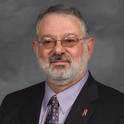Context: Osteopathic manual treatment (OMT) of somatic dysfunction is a unique approach to medical care that may be studied within a practice-based research network. Objective: To measure patient characteristics and osteopathic physician practice patterns within the Consortium for Collaborative Osteopathic Research Development– Practice-Based Research Network (CONCORD-PBRN). Design: Cross-sectional card study. Setting: Eleven member clinics within the CONCORD-PBRN coordinated by The Osteopathic Research Center. Patients: A total of 668 patients seen between January and March 2013. Main Study Measures: Patient age and sex; primary diagnoses; somatic dysfunction as manifested by tenderness, asymmetry, restricted motion, or tissue texture changes; and use of 14 OMT techniques. Results were stratified by anatomical region and adjusted for clustering within member clinics. Clustering was measured by the intracluster correlation coefficient. Results: Patient ages ranged from 7 days to 87 years (adjusted mean age, 49.2 years; 95% confidence interval [CI], 43.3-55.1 years). There were 450 females (67.4%) and 508 patient visits (76.0%) involved a primary diagnosis of disease of the musculoskeletal system and connective tissue. Structural examination was performed during 657 patient visits (98.4%), and 649 visits (97.2%) involved OMT. Restricted motion and tenderness were the most and least common palpatory findings, respectively. Cranial (1070 [14.5%]), myofascial release (1009 [13.7%]), muscle energy (1001 [13.6%]), and counterstrain (980 [13.3%]) techniques were most commonly used, accounting for more than one-half of the OMT provided. Pediatric patients were more likely than adults to receive OMT within the head (adjusted odds ratio [OR], 9.53; 95% CI, 1.28- 71.14). Geriatric patients were more likely than adults to receive a structural examination (adjusted OR, 1.83; 95% CI, 1.09-3.07) and OMT (adjusted OR, 1.62; 1.02-2.59) within the lower extremity. Females were more likely than males to receive a structural examination (adjusted OR, 2.44; 95% CI, 1.44-4.16) and OMT (adjusted OR, 2.11; 95% CI, 1.26-3.52) within the sacrum and OMT within the pelvis (adjusted OR, 1.79; 95% CI, 1.12-2.88). Intracluster correlation coefficients for the 4 most commonly used OMT techniques ranged from 0.34 to 0.72. Conclusion: This study provides proof of concept of the feasibility of studying osteopathic medical practice on a national level by developing and growing the CONCORD-PBRN.
Available at: http://works.bepress.com/murray_berkowitz/2/

This article was originally published in Journal of the American Osteopathic Association, Volume 114, Number 5
Th published version is available online at http://dx.doi.org/10.7556/jaoa.2014.072
Copyright © 2014, the American Osteopathic Association